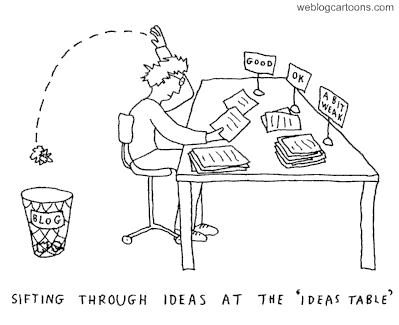Future-oriented Learning and the 85 Page Behemoth
The reading this week is an 85-page behemoth entitled “Supportingfuture-oriented learning & teaching – a New Zealand perspective”. Being the helpful geek that I am, I thought I might summarise the subheadings within it in a few words just to make it a little easier to select one of them for Activity 2.
The document
works on the following premises:
- “21st Century Learning” and “Future Learning” are interchangeable and is characterized as being an emerging (important word) “cluster of new ideas, beliefs, knowledge, theories and practices” (p.1). They exist along a continuum from being highly visible in schools to barely visible.
- Knowledge is easily accessible so we need to rethink what we are doing with that knowledge in classrooms. We need to move from mere transmission and acquiring knowledge, to the use of that knowledge in terms of knowing what to do with it, manipulating it and applying it in new contexts. They use the term “fluidity” (p.2) with respect to knowledge. They make it clear that knowledge is still important but we need to work harder on application of that knowledge.
- Learning needs to be more student focused rather than knowledge delivery focused. We know this as putting the student at the centre of learning (easier said than done in some cases). They use the term “unbundling” (p.2) in which, “innovators deconstruct established structures and routines and reassemble them in newer, smarter ways” (p.2). Many of us will recognise that this can be difficult when trying to arrest and divert many years of accrued momentum within the systems in which we work. We have all experienced the frustration of trying to implement systemic change.
There are many
themes and sub-themes within the document and we are to select ONE of these and create a reflective entry to critically
reflect upon how you have positively changed your practice during your
postgraduate journey to address one of the themes or sub-themes.
Here goes …
Theme 1: Personalised Learning:
This represents a move away from the “one size fits all”
model of teaching, to one in which the student is at the centre. Education systems are built around the
learner rather than the system. The challenge is how to manage and
deliver this within the current structures – which implies current structures
need to be altered. They recognise that
this is very much on the fringes in terms of implementation and tends to exist at
a “shallow” (p.18) rather than the “deep personalisation” (p.3) that many argue
for. Pages 17-24 go into greater detail.
Theme 2: New views of equity, diversity and inclusivity:
This recognises that what has happened in the past in
education has not been equitable, diverse and inclusive for many in our
communities. It argues we should be
educating “for diversity” (p.3) in
terms of people and knowledge. Bringing
everyone’s ideas to the table. I think
about banding or streaming within schools and ask how does this promote equity,
diversity and inclusivity? Pages 25-30
go into greater detail.
Theme 3: A curriculum that uses knowledge to develop learning capacity:
This considers the tension between knowledge as content and knowledge as doing.
It advocates for the use of knowledge to create, challenge and solve
problems (hence the do things with knowledge).
This would be the “real world” contexts or links we talk about so often. Make learning tangible and relevant. Pages 31-38 go into greater detail.
Theme 4: “Changing the Script”: Rethinking learners’ and teachers’ roles:
This is a move away from the tradition “script” of teacher
as transmitter of knowledge and student as passive recipient, to one in which learning
is an equal partnership between student and teacher. It is not advocating for the student to
dictate content or delivery, rather they work together with teachers to share
power. It links closely to Theme 1. Pages 39-44 go into greater detail.
Theme 5: A culture of continuous learning for teachers and educational leaders:
This is based on the premise that we never stop
learning/evolving in education.
Consequently, schools need to create environments that are flexible and
adaptable to new ways of learning. This
is not only for students, but also the education/re-education/professional
development of staff within schools. Is
this learning available? Pages 45-48 go
into greater detail.
Theme 6: New kinds of partnerships and relationships: Schools no longer siloed from the community:
This is recognising the complexity of life outside of school
and adapting learning to make it authentic to the world they are likely to
encounter. This involves bringing in
expertise from the community so knowledge can be seen to be being applied in
the “real world”. Collaboration with the
community beyond school. Pages 49-54 go
into greater detail.
There are also two sub-themes in the document.
Sub-theme 1: The role of current and emerging technologies:
This recognises the potential of current and new technologies
to enhance learning. It is dependent on
schools, “having the infrastructure, inspiration, capability, and opportunities
for innovation to achieve this kind of teaching and learning” (p.6). Pages 55-64
go into greater detail.
Sub-theme 2: Role of collaborative practices:
This is the networking and clustering of schools to share
best practice, innovations, goals etc. to develop their capacity.
Whew!
Pick one…
Reference:
Bolstad, R., Gilbert, J., McDowall, S., Bull, A., Boyd, S., & Hipkins, R. (2012). Supporting future-oriented learning and teaching — a New Zealand perspective. Report prepared for the Ministry of Educationve. Retrieved from https://www.educationcounts.govt.nz/publications/schooling/109306




You, sir, are a gentleman and a scholar.
ReplyDeleteThis was so helpful and I appreciate the time it took you to put this together. It helped my understanding of the different themes and sub themes greatly.
ReplyDelete